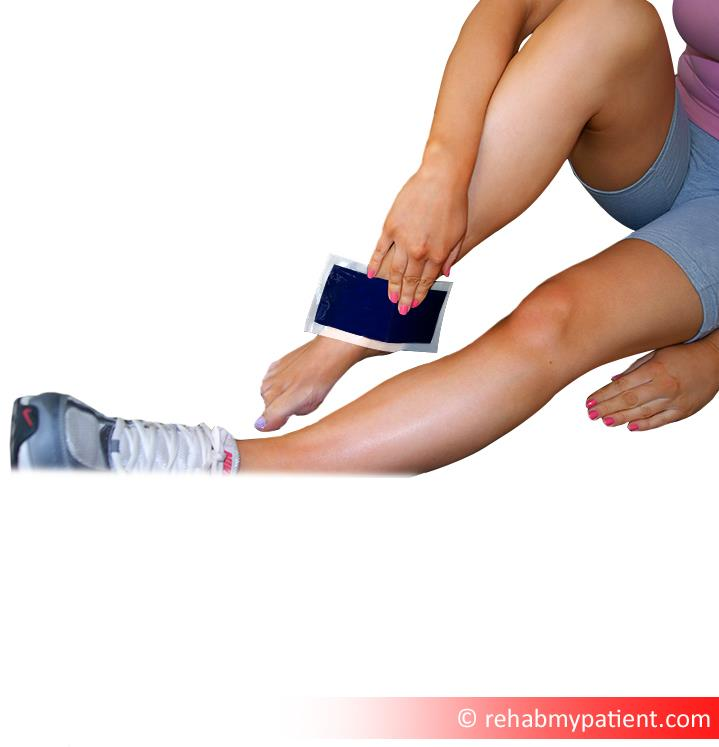Eversion Sprain of the Ankle
Posted on 09th Jul 2018 / Published in: Ankle

It is very common to twist your ankle, and it often occurs in childhood. If your ankle becomes swollen and painful following that twist, you might have sprained it. This means you have probably stretched or town the ligaments that make up your ankle. Even though sprains tend to be quite common, they aren't always considered a minor injury. Some of those who have severe or repeated sprains could end up developing long-term pain in the joints and weakness. Properly treating the sprained ankle will help to prevent any future ongoing problems.
Eversion sprains occur when you roll your ankle inwards, typically damaging the ligament on the inside of your ankle.
Eversion Sprain of the Ankle Anatomy
When it comes to the anatomy of the ankle, there is a bony block located on the inside, which pushes the ankle toward the outside. The ligaments and musculature along the inside of the ankle are a lot more secure and thicker than those that lie along the outside. In normal walking patterns, the majority of the weight is placed outside of the foot when placed onto the ground, which naturally causes an inversion for the ankle joint.
The most common ligament to sprain or tear during an inversion sprain is the deltoid ligament. This ligament is located on the inside of your ankle. If you have sprained or torn it, you will most likely have gross swelling with bruising and soreness, worst on the inside of the foot and ankle.
What Causes an Ankle Eversion Sprain?
There are a number of potential causes and risks:
- Uneven surfaces, especially if playing sport on them, are risks to the ankle, as you may suddenly twist your ankle on an uneven turf or ground. Fields with holes in them are also very risky, and it's easy to step in a hole without seeing it first and sprain the ankle.
- Sports that require a lot of change of direction or change of pace. Commonly sports like basketball and netball where you have to turn suddenly can sprain the ankle.
- Underlying hypermobility is a common problem in that the ankle ligaments are not supportive, and are too elastic so stretch too much. This might be genetic or acquired.
- Previous ligament sprains are a very big problem. It’s estimated that 75% of ankle sprains are recurrent. Make sure you strengthen your ankle following a sprain.
- Poorly fitting footwear, or wrong type of footwear. For example, hikers and walkers benefit from a higher sided walking boot to stabilize the ankle in case of uneven surfaces, and basketball players use high sided trainers. Using the right footwear for your sport will help, and make sure the footwear is fitted properly and is not too big.
How to Treat an Eversion Sprain of the Ankle:
- Protection
Using a protective brace, such as that of a brace that comes with a built-in air cushion or another form of ankle support, as well as a compression wrap, such as an ACE bandage, for the first 24 to 36 hours will help to reduce swelling and offload pressure on the ankle which should help reduce the chance of further injury to the site. - Rest
You might have to use a pair of crutches until you are able to walk without experiencing pain. Try to take it easy and let the foot have time to heal after the sprain has occurred. - Ice
For the first two to three days after the injury, or until such time as the swelling
subsides, you can apply an ice pack for around 10 minutes every one to two hours throughout the day. After the first two days, you can continue on with ice or a contrast bath. Even though some people don't feel this helps, others have experienced relief when using this method, and persistence is the key here, so keep using it. Usually the ice is used on the inside of the ankle as shown in the diagram, but you can use it where the pain and swelling is. - Non-Inflammatory Medication
For many people, an anti-inflammatory like ibuprofen or naproxen is often used to help reduce the pain and swelling in the ankle. Anti-inflammatory rubs like tiger balm, ibulieve gel, or movelat can help. We prefer to recommend ice as a more natural anti-inflammatory. - Compression
Elastic compression wraps help to alleviate swelling and should be used for the first 24 to 36 hours following the injury. Protective braces should be worn if you are going to bear any weight on the ankle that was injured. Avoid applying the wrap too tightly. If the bandage becomes too tight, try loosening it. Signs that you need to loosen the bandage include tingling, numbness, coolness, pain and swelling in the area beneath the bandage.

Tips:
- Ankle sprains occur when the ligaments that connect the bones of the ankle, foot and lower leg are stretched too far or tear.
- In eversion injuries the foot turns outward and the ankle rolls inward, which damages the ligaments inside of the ankle.
- If the leg is forcefully twisted when the foot is planted, a sprain can occur.
- When the ligaments of the syndesmosis are injured, it can take longer for the sprain to heal.
- Use ice to reduce the inflammation.
- Mobility exercises help the rehabilitation process, follow the guidance of your Rehab My Patient herapist.
Sign UP
Sign up for your free trial now!
Get started with Rehab My Patient today and revolutionize your exercise prescription process for effective rehabilitation.
Start Your 14-Day Free Trial